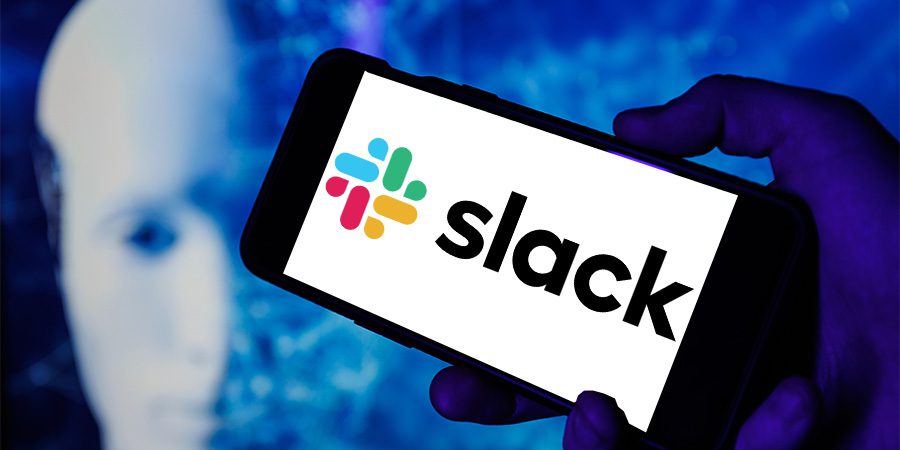In this article, we’ll explore the exciting developments surrounding Salesforce’s Slack GPT, an AI-integrated platform that aims to enhance user productivity and workflow customization.
Key Takeaways:
- Slack GPT focuses on three main features: native AI integration, customizable automated workflows, and a dedicated Einstein GPT app for Slack.
- In Slack, people have the ability to change the way their messages sound and how long they are.AI-powered tools can attend Huddles, providing summaries and catching up on missed messages.
- Customizable workflows can be created with no coding experience required.
- Slack GPT can integrate other large language models like Anthropic’s Claude or OpenAI’s ChatGPT.
- Salesforce is creating a new Slack app that uses a helpful AI called Einstein GPT. This AI assistant can generate content and is being designed specifically for use in Slack.
Slack GPT: An Overview of the AI-Powered Experience
Salesforce recently unveiled Slack GPT, a suite of AI-driven features designed to boost productivity and streamline communication within the popular workplace messaging platform, Slack.
Revealed at the Salesforce World Tour event, Slack GPT promises to bring a new level of efficiency to team collaboration by leveraging cutting-edge AI technology.
Natively Integrated AI Features for Enhanced Communication
Slack GPT seeks to seamlessly blend AI functionality into the everyday user experience without disrupting the way people interact with the platform.
One of the many ways it aims to achieve this is by providing users with the ability to adjust the tone and length of their messages directly within Slack.
This can be particularly useful in ensuring clear and concise communication between team members, leading to a more productive working environment.
Additionally, Slack GPT can attend Huddles on your behalf, generating summaries of the discussions and catching you up on any unread messages.
This feature could save users a significant amount of time and energy, allowing them to focus on more pressing tasks while still staying informed on important team updates.
Customizable Automated Workflows for Streamlined Tasks
Another key aspect of Slack GPT is its emphasis on customizable workflows, allowing users to automate tasks with simple prompts—no coding experience necessary.
This feature will be made possible through the incoming Workflow Builder, which enables users to create custom workflows tailored to their unique needs and requirements.
For example, sales teams could use these features to auto-generate account channel summaries, create investor canvases, and generate customer recommendations.
Customer service agents could leverage AI-generated solutions and responses to resolve issues more efficiently, as well as auto-generate case summaries.
Developers, on the other hand, could use the features to monitor channel activities and summarize root cause analysis when identifying solutions for software issues.
Incorporating External Large Language Models for Versatility
Slack GPT’s capabilities extend beyond its native features, as it can also integrate external large language models (LLMs) like Anthropic’s Claude or OpenAI’s ChatGPT.
This added versatility allows teams to utilize the best AI resources available to suit their specific needs and preferences.
Salesforce has emphasized that Anthropic and OpenAI will not use any data from their Slack apps to train their language models, addressing potential privacy concerns.
Companies that prioritize privacy even further can also choose to integrate their proprietary software or LLMs into the Slack ecosystem, ensuring complete control over their data.
Einstein GPT: Salesforce’s Generative AI Assistant Joins Slack
As part of the Slack GPT initiative, Salesforce is also adapting Einstein GPT, a generative AI assistant they created, into a dedicated Slack app.
Einstein GPT has the ability to access live customer information from trusted Salesforce Customer 360 data and the Data Cloud, which can be integrated into Slack workflows.
This integration means that teams can receive automatic notifications of new leads or updates on ongoing sales projects, streamlining communication and promoting efficiency.
Salesforce’s acquisition of Slack in 2021 for $27.7 billion paved the way for the development of these interconnected features, as the company aims to make the two platforms more cohesive and aligned.
In a discussion about how generative AI can influence the workplace, Lidiane Jones, who is the CEO of Slack, emphasized that the true potential of this technology lies in its ability to examine and make use of a company’s most valuable information from its own internal resources.
While no fixed release dates have been announced for Slack GPT’s features, the new Workflow Builder is expected to arrive sometime “this summer,” with both the Einstein GPT app for Slack and Slack GPT’s
native AI features still in development. As Salesforce continues to work on the integration of these AI-driven tools, users eagerly anticipate the unveiling of this next-generation productivity suite.
Conclusion
Slack GPT represents a major leap forward in AI-enhanced collaboration, offering users an array of tools designed to streamline tasks, improve communication, and maximize efficiency.
With the integration of native AI features, customizable automated workflows, and compatibility with external large language models like Anthropic’s Claude and OpenAI’s ChatGPT, Slack GPT is poised to redefine the way we work in the digital age.
As the summer release of the Workflow Builder approaches, teams worldwide are keen to experience the benefits of this groundbreaking platform first-hand.
 Sections of this topic
Sections of this topic
















